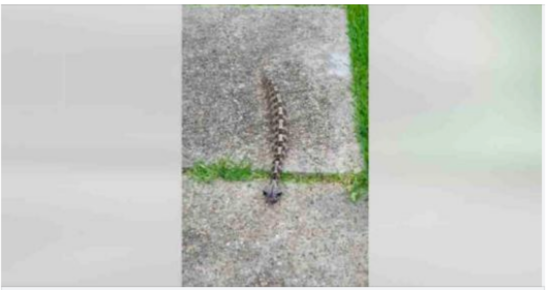Many people have a deep fear of snakes, yet they are also captivated by these creatures, particularly the world’s most dangerous ones. One of the most remarkable snakes in the African rainforests is the Gaboon Viper, known for its exceptional camouflage, potent venom, and impressive hunting skills.
The Gaboon Viper stands out due to its unique features and status as one of Africa’s most formidable predators. Its extraordinary characteristics allow it to thrive in its environment and command respect among other creatures. By exploring the world of this incredible animal, we can uncover the secrets behind its remarkable abilities and its role in the African rainforest ecosystem.
The Gaboon Viper: Nature’s Master of Disguise

The Gaboon Viper, also known as the Gaboon adder, is one of Africa’s largest and deadliest vipers. It resides in both the lush rainforests and dry savannas of Central and West Africa. This elusive snake is famous for its vibrant and intricate camouflage, making it an expert at hiding in plain sight.
These snakes, only surpassed in size by exceptionally large King Cobras, can grow over six feet long and weigh more than 20 pounds. Remarkably, the Gaboon Viper has the longest fangs of any venomous snake, measuring up to an astonishing two inches. Additionally, it boasts one of the most powerful venom deliveries in the serpent world.
Potent Venom and Remarkable Camouflage
The Gaboon Viper’s venom is a powerful mix of enzymes and toxins that can cause severe tissue damage and intense pain. If untreated, the venom can be fatal. The snake’s head is large and triangular, but its intricate skin patterns are what truly captivate the imagination. These patterns allow the snake to blend seamlessly into the leaf litter on the forest floor, making it nearly invisible until it strikes.
Hunting Tactics and Prey

The Gaboon Viper uses a patient and strategic approach when ambushing its prey. This snake can remain motionless for long periods, waiting for the perfect moment to attack. It preys on a variety of animals, including fully grown rabbits, monkeys, and occasionally small antelopes. Its ability to consume sizable prey highlights its formidable nature and incredible appetite.
Gaboon Vipers as Pets: A Risky Endeavor
Although the Gaboon Viper is primarily found in Africa, some enthusiasts in the United States and other countries keep them as exotic pets. This practice is fraught with risks due to the snake’s highly potent venom. Keeping a Gaboon Viper requires a thorough understanding of the animal’s behavior, needs, and potential dangers.
Anyone considering keeping a venomous snake must have the necessary permits and comply with local laws and regulations. Proper training in handling these snakes and having a contingency plan in case of bites or emergencies is crucial.
A Stark Reminder of the Risks
In one notable incident, a man’s life was in danger as medical professionals worked tirelessly to administer antivenom and provide necessary care after a bite. The swift action of the police, and the collaborative effort of the VCU Medical Center, Smithsonian National Zoo, and Virginia Aquarium and Marine Science Center played critical roles in his survival. His condition stabilized, and he began to recover, highlighting the importance of responsible pet ownership and safety measures.
Lessons from Recent Incidents
The year 2022 saw multiple incidents involving Gaboon Viper owners in the United States. In North Carolina, a man was bitten and required 44 vials of antivenom, ultimately losing several fingers. While encounters with Gaboon Vipers in the US are rare, there have been instances of these snakes escaping into the wild. In 2015, a possible sighting was reported in Milledgeville, Georgia. In 2021, a video shared by The Reptile Report showcased the snake’s incredible camouflage abilities, making it appear like a caterpillar when it moved.

Appreciating Nature’s Wonders
The viral video of the Gaboon Viper captured the imagination of many, highlighting the snake’s amazing characteristics. This remarkable creature exemplifies nature’s wonders, demonstrating exceptional adaptation and survival skills within the African rainforests.
Exploring the mysterious lives of such species helps us appreciate the delicate balance between power and beauty in the natural world. If you find this story fascinating, share it with others to spread awareness of this incredible snake!


